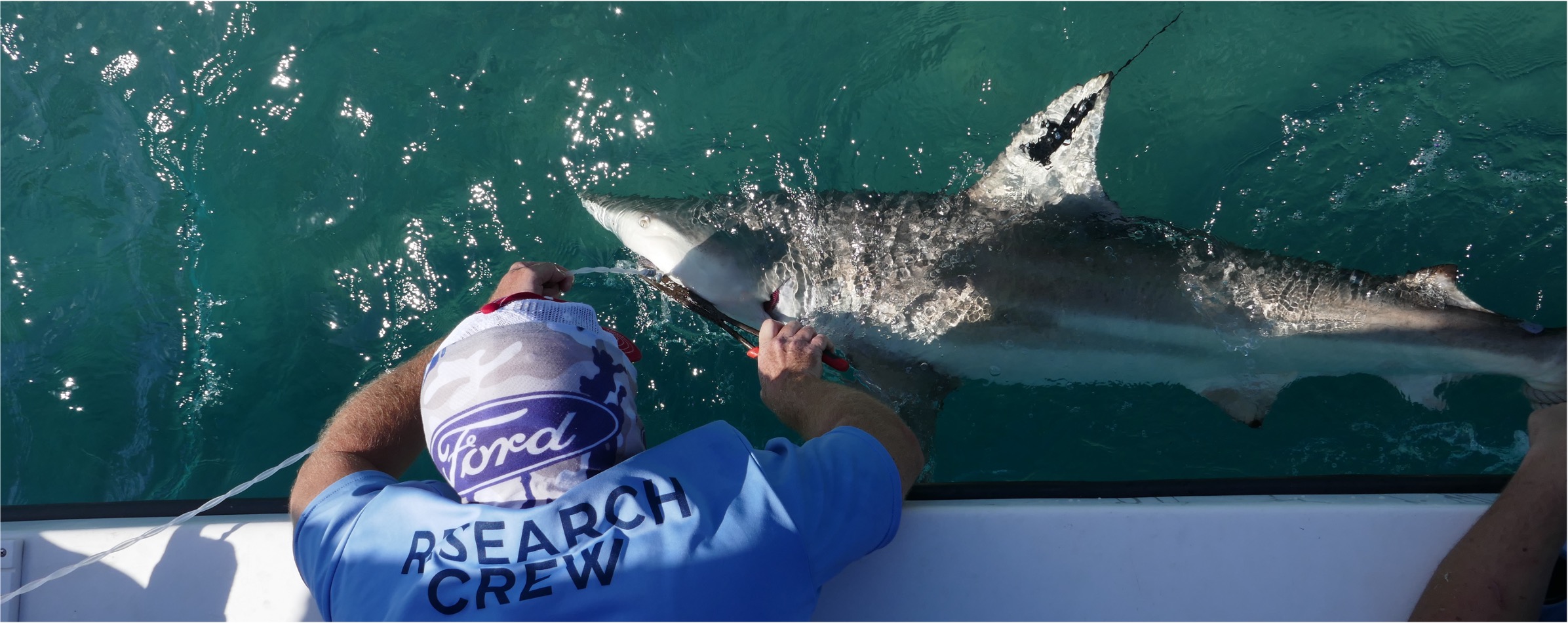
The 2022 blacktip shark fishing season is coming to an end, and it has been an incredible one! We’ve caught and released a record number of sharks this year just offshore of John D. MacArthur State Park, with 45 sharks (and counting!). Most of the sharks were blacktips, with a few other species including great hammerhead, tiger, nurse and blacknose. This winter, as with every winter, we saw the blacktips aggregate in the coastal waters just off the beaches of southeastern Florida. The continental shelf narrows as we move south along our coast, and these sharks are funneled towards the shore, seeking shallow habitats where they can feed and escape larger predators. Following the end of the “cold months” here in Florida, blacktips migrate north towards mating grounds off the Carolinas and Georgia, where they will spend the summer. As waters cool throughout the fall, these sharks will return south to overwinter in our own backyard
In the Elasmobranch Research Lab, we are using this predictable appearance of blacktip sharks in our waters each winter to answer many questions about shark biology and ecology. Our students are investigating the behavioral responses of elasmobranchs to different auditory stimuli, the impact of magnetic fishing lures on shark bycatch, and the migratory patterns of blacktip sharks in the Northwest Atlantic. Our lab has been placing acoustic and satellite tracking tags on these sharks for years, and we’re developing a thorough and insightful understanding of their behaviors and biology. The research conducted here will help government, industry, and conservation groups effectively manage this ecologically and commercially important species.